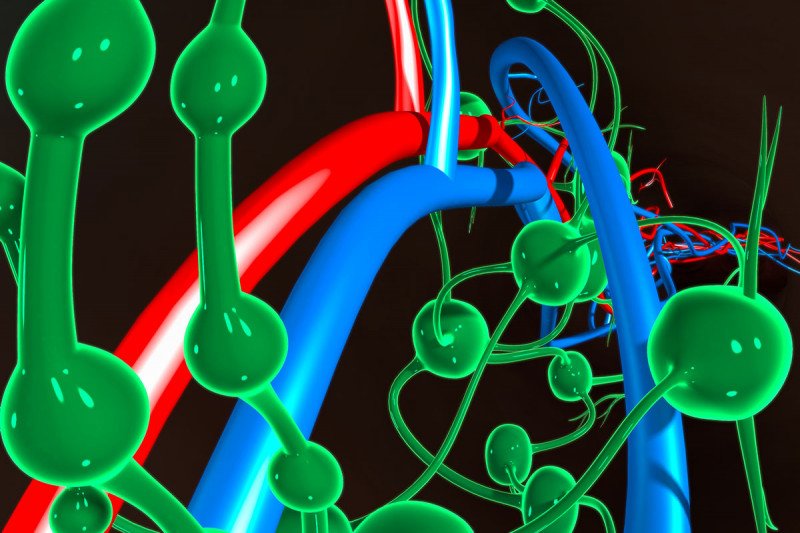
Sentinel lymph node (SLN) mapping leads to significantly less lower-extremity lymphedema compared to comprehensive lymphadenectomy (LND) after hysterectomy in patients with endometrial cancer, according to our research published recently in the journal Gynecology Oncology. Our study is the first to assess patient-reported lower-extremity lymphedema after SLN mapping for endometrial cancer.
We asked 1,275 patients to respond to a validated screening questionnaire. Among 599 evaluable respondents, the prevalence of self-reported lower-extremity lymphedema (LEL) was 27 percent (49 of 180 patients) in the SLN group, significantly lower than 41 percent (144 of 352 patients) in the LND group. The odds ratio (OR) of reporting lymphedema with LND versus SLN was 1.85 (95 percent CI, 1.25 to 2.74; p = 0.002). Higher body mass index (BMI) and the use of adjuvant external-beam radiotherapy were associated with an increased prevalence of lymphedema. (1)
Overall, our findings provide additional support for SLN mapping in women with endometrial cancer, not only for accurate staging but also to decrease morbidity due to lymphedema and improve their quality of life after surgery. Our data may also inform discussions about the risks and benefits of adjuvant radiation therapy in this patient population. (1)
Lymph Node Assessment Method and Lymphedema
Pelvic and para-aortic LND has been considered the standard of care for patients with newly diagnosed endometrial cancer. (2) However, many surgical oncologists have debated its role. In two randomized, controlled trials, LND did not result in improved survival, (3), (4) but it did improve the identification of nodal disease and allow for more accurate staging, which many consider as essential considerations for guiding adjuvant treatment.
The therapeutic superiority of LND over SLN mapping alone, especially in high-risk cases and those with SLN metastases, is also debatable. Previous retrospective studies have suggested that choosing SLN mapping over LND does not compromise oncologic outcomes. (5), (6) For example, in our previous study, we found no association between the lymph node assessment method and progression-free survival or overall survival in patients with deeply invasive endometrioid endometrial carcinomas. (6)
Despite any debate about therapeutic value, LND is associated with an increased risk of LEL. (7) In patients with low-risk endometrial cancer, the rate of long-term lymphedema directly caused by LND has been reported at 23 percent. (8) The symptoms of lymphedema, including pain, skin breakdown, difficulty with self-care, impaired mobility, and psychosocial morbidity, can significantly reduce patients’ quality of life. (5)
SLN mapping has emerged as an acceptable alternative to comprehensive LND for staging patients with endometrial cancer. The approach was added to the National Comprehensive Cancer Network guidelines in 2018, allowing SLN mapping for the surgical staging of endometrial carcinomas. (9)
Study Design
We identified all patients who had undergone hysterectomy for newly diagnosed endometrial cancer at Memorial Sloan Kettering Cancer Center between January 2006 and December 2012. We mailed them a questionnaire that included a 13-item screening survey about lower-extremity lymphedema (the LEL PRO survey, a tool that investigators at the Mayo Clinic have validated) (8) and two validated quality-of-life assessment tools (the EORTC QLQ-C30 and EORTC QLQ-EN24). (10), (11), (12)
Median age and BMI did not differ between the SLN and LND cohorts. Differences in the International Federation of Gynecology and Obstetrics stage, grade, and histology reflected the evolution of patient selection for SLN mapping during the study period.
We evaluated patient-reported outcomes for patients who had hysterectomies with SLN, standard LND, or hysterectomy alone. We also looked for outcome differences in patients who had or had not received external-beam radiotherapy and in those with a higher or lower BMI.
Study Results
A total of 623 patients (49 percent) responded to our survey. Among 599 evaluable patients, 180 had received SLN mapping, 352 had received LND, and 67 had hysterectomy alone. The median time from the date of surgery to survey response was 63.2 months, 93.1 months, and 84.5 months for the three groups, respectively. (1)
Overall, 37 percent (220 of 599 patients) reported lower-extremity lymphedema on the LEL-PRO questionnaire. A significantly lower percentage of patients in the SLN cohort reported lymphedema (27 percent, 49 of 180 patients; 95 percent CI, 20.7 to 33.7 percent) compared to patients in the LND cohort (41 percent, 144 of 352 patients; 95 percent CI, 35.8 to 46.1 percent, p ≤ 0.039). (1)
The prevalence of lymphedema was 51 percent (23 of 45 patients) in patients who received external-beam radiotherapy and 35 percent (170 of 487 patients) in those who did not (OR, 1.95; 95 percent CI, 1.02 to 3.6; p = 0.03). High BMI was associated with an increased prevalence of lymphedema (OR, 1.04; 95 percent CI, 1.02 to 1.06; p = 0.001). (1)
After adjusting for BMI and external-beam radiotherapy, LND maintained its independent association with patient-reported lower-extremity lymphedema compared to SLN (OR, 1.8; 95 percent CI, 1.22 to 2.69; p = 0.003). (1)
Advancing Endometrial Cancer Care
The comprehensive removal of both clinically and pathologically normal lymph nodes is not beneficial for the majority of patients with endometrial cancer. However, we are not recommending the exclusion of any nodal assessment, as that would lead to improper staging and result in over- or undertreating patients based on patient and uterine features alone. Our present study confirms that the benefit of SLN mapping over LND lies in the reduction of lymphatic morbidity and subsequent improvements in quality of life.
At MSK, our SLN algorithm, which is endorsed by the National Comprehensive Cancer Network, has a false negative predictive value of 0.5 percent. (13) It requires the removal of any suspicious nodes, irrespective of dye uptake, as well as performing side-specific lymph node dissection in hemipelvises that do not map.
We are dedicated to maximizing patient outcomes and, at the same time, minimizing the toxic effects of cancer treatments. Ideally, we would like to conduct further research to investigate patient-reported lower-extremity lymphedema and quality of life in patients with newly diagnosed endometrial cancer. We would evaluate them before surgery and at various intervals to capture the timing of lymphedema after surgery.
MSK is the only dedicated cancer center with an active lymphedema surgical program supported by a dedicated lymphedema research lab. Read more about MSK’s search to understand the factors that contribute to the condition so that one day, we may find a cure.
Dr. Leitao reports being an ad hoc speaker for Intuitive Surgical, outside the submitted work. Dr. Abu-Rustum reports grants from Stryker/Novadaq, Olympus, and Grail, outside the submitted work.
